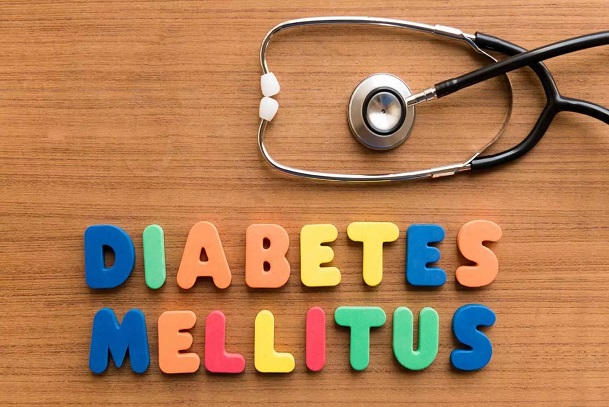 Wash your hands regularly and wear a face mask.
Learn more
Wash your hands regularly and wear a face mask.
Learn more

What is Diabetes Mellitus (Diabetes)?
Diabetes is a chronic metabolic disease characterized by elevated blood sugar which leads to damage of body tissues and organs (such as heart, blood vessels, kidneys etc.), over a period of time. The reason for this is that the body cannot metabolize glucose (sugar) effectively because of a lack of adequate insulin or interference with insulin functions. Insulin is a hormone that regulates blood sugar.
Diabetes mellitus affects both children and adults.
Types of Diabetes Mellitus
There are two types of diabetes mellitus: type 1 and type 2.
What is Type 1 Diabetes?
Type 1 diabetes occurs when the pancreas produces little or no insulin by itself, requiring daily insulin administration. This type of diabetes is very common among children and young adults.
The cause of type 1 diabetes is relatively unknown, but it is assumed to result from a combination of genetic and environmental factors. Currently, there is no known way to prevent type 1 diabetes mellitus.
What is Type 2 Diabetes?
Type 2 diabetes (sometimes called non-insulin-dependent or adult-onset diabetes) happens when the body cannot effectively use the insulin it produces, and over time, it can cause serious damage to the body, especially the nerves and blood vessels. It is preventable since it can result sometimes from excess body weight and physical inactivity,
Recently, type 2 diabetes has increasingly been reported in children and adolescents, so much so that in some parts of the world type 2 diabetes has become the main type of diabetes in children. The global rise of childhood obesity and physical inactivity is widely believed to play a crucial role. Healthy eating and lifestyle habits are a strong defence against the disease.
How Common Is Diabetes in Nigeria?
Diabetes is a common disease in the world. About 422 million people worldwide have diabetes, the majority living in low-and middle-income countries, and 1.5 million deaths are directly attributed to diabetes each year. Both the number of cases and the prevalence of diabetes have been steadily increasing over the past few decades.
In Nigeria, a recent analysis reported that approximately 5.77% of Nigerians are living with diabetes mellitus. The pooled prevalence of diabetes mellitus in the six geopolitical zones of Nigeria were 3.0% in the North-West, 5.9% in the North-East, 3.8% in the North-Central, 5.5% in the South-West, 4.6% in the South-East, and 9.8% in the South-South zone. The highest prevalence of diabetes is the South-South and the lowest prevalence is the North-West.
How Do You Know You Have Diabetes Mellitus?
This is the most asked question especially when there are no visible signs or symptoms if a person has diabetes or not. According to the World Health Organization (WHO), symptoms of diabetes may occur suddenly. In type 2 diabetes, the symptoms can be mild and may take many years to be noticed.
Symptoms of diabetes include:
If you have any of these symptoms, you should suspect that you have diabetes mellitus.
What Do You Do IF You Suspect You Have Diabetes Mellitus?
It is advisable you visit a doctor to get a diagnosis. The earlier the disease is diagnosed, the earlier the treatment can begin. You may also check your blood in a standard laboratory.
Fasting blood sugar of 100mg/dl or less is normal. Fasting blood sugar of 100 - 126 is prediabetes, and above 126 is a possible diabetes mellitus. HbA1c less than 6 is normal, 6 – 6.5 is prediabetes, and above 6.5 is diabetes mellitus.
What Diseases Are Associated with Diabetes Mellitus?
There are several diseases that have been associated with diabetes, and they include:
Early treatment of diabetes mellitus can prevent these diseases. However, if they are present, they should be treated as well.